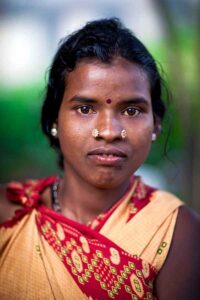Introduction to Eklavya Model Residential Schools (EMRS)
India, with its vast diversity, has numerous tribal communities that reside in remote and underdeveloped areas. These communities often face challenges in accessing quality education due to their geographical, socio-economic, and cultural isolation. To address these issues and ensure the holistic development of tribal children, the Government of India introduced the concept of Eklavya Model Residential Schools (EMRS). Named after the legendary archer Eklavya from the Mahabharata, these schools symbolize dedication and excellence in education.
Historical Background and Evolution
The idea of EMRS was conceived as part of the government’s commitment to the educational upliftment of Scheduled Tribes (STs). The initiative was launched by the Ministry of Tribal Affairs, Government of India, in 1997-98. The primary objective was to provide quality middle and high-level education to tribal students in remote areas, thereby enabling them to access the same educational standards as those in urban areas.
Objectives of EMRS
- Educational Excellence: To provide quality education to tribal students, comparable to the standards in urban education.
- Holistic Development: To focus on the overall development of students, including academic, physical, and emotional growth.
- Inclusivity: To ensure that no child from a tribal community is deprived of quality education due to geographical or socio-economic barriers.
- Promotion of Tribal Culture: To preserve and promote the rich cultural heritage of tribal communities while imparting modern education.
Infrastructure and Facilities
Eklavya Model Residential Schools are equipped with modern facilities to provide a conducive learning environment. The schools typically include:
- Academic Buildings: Well-equipped classrooms, laboratories for science and computer education, and libraries with a wide range of books.
- Hostel Facilities: Residential facilities for students, ensuring a safe and supportive environment. Separate hostels for boys and girls with adequate amenities.
- Sports and Recreation: Sports facilities including playgrounds, indoor games, and equipment for various sports to encourage physical fitness and overall well-being.
- Healthcare: On-campus healthcare facilities with regular medical check-ups and emergency care to ensure the health and well-being of students.
- Nutritious Meals: Provision of balanced and nutritious meals to cater to the dietary needs of growing children.
Curriculum and Pedagogy
The curriculum at EMRS is designed to be inclusive and holistic, catering to the diverse needs of tribal students. Key features include:
- Standard Curriculum: Following the CBSE (Central Board of Secondary Education) syllabus to ensure uniformity and high standards of education.
- Cultural Integration: Incorporation of tribal culture, traditions, and languages into the curriculum to preserve and promote the unique heritage of tribal communities.
- Skill Development: Focus on vocational training and skill development to prepare students for various career opportunities.
- Teacher Training: Regular training and professional development for teachers to adopt innovative teaching methods and understand the unique needs of tribal students.
Impact and Achievements
Since their inception, EMRS have made significant strides in improving the educational outcomes of tribal students. Some notable achievements include:
- Improved Enrollment: A marked increase in the enrollment of tribal children in quality educational institutions.
- Academic Excellence: Students from EMRS have consistently performed well in board examinations and competitive exams, securing admissions to prestigious institutions.
- Empowerment: Empowerment of tribal communities through education, leading to increased awareness and socio-economic development.
- Cultural Preservation: Successful integration of tribal culture in the educational framework, preserving the unique identity of tribal students.
Challenges and Way Forward
Despite the successes, EMRS face several challenges that need to be addressed to ensure their continued effectiveness:
- Geographical Barriers: Remote locations pose logistical challenges in terms of infrastructure development and accessibility.
- Teacher Shortage: Recruitment and retention of qualified teachers willing to work in remote areas remain a significant challenge.
- Cultural Sensitivity: Ensuring cultural sensitivity and inclusivity in the curriculum and school environment requires continuous effort and adaptation.
- Sustainability: Ensuring the financial and operational sustainability of EMRS in the long run.
Conclusion
Eklavya Model Residential Schools represent a significant step towards achieving educational equity and empowerment for tribal communities in India. By providing quality education and a supportive environment, these schools play a crucial role in bridging the educational gap and fostering the holistic development of tribal students. As the initiative continues to evolve, addressing the existing challenges and building on the successes will be key to realizing the full potential of EMRS in transforming the lives of tribal children and their communities.